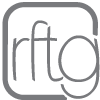The Zyto Biocommunication hand cradle is a bio-information tool designed to assist health practitioners gather client-specific information. It facilitates a conversation between the computer and the client at an autonomic or subconscious level. This conversation is essentially an extension of the intake process involving a written health history, as Biocommunication can be compared to the health history form and the pen used to fill in the blanks. Although the printed form and the pen are not medical devices the information they collect can have significant clinical value. This is also true for Biocommunication; gathering information is the objective. Information is the transmission of knowledge.
There are various ways to transmit knowledge. The communication pathway that Biocommunication accesses is Galvanic Skin Response or GSR. GSR is concerned with the conductivity (how well something conducts electricity) of the largest organ in the body, the skin.
A German Professor named Tarchanoff first discovered skin conductivity around 1888. In the early 1900’s Dr. Carl Jung established that GSR measurements could track physiological arousal or stress in the body. In the 1930’s Dr. Hans Selye began to uncover the importance of understanding stress and what information it could tell us about the body. These discoveries have led to the creation of many common devices, such as the polygraph test. Later in the 20th century, Dr. Reinholt Voll and others identified further uses for GSR, including the monitoring of acupuncture points to determine the condition of the body’s energy meridians.
In the 1980’s, Dr. Vaughn R Cook began to build on these applications. The initial goal was to use computers and GSR to gather data to aid healthcare professionals in making diagnostic and therapeutic decisions. After designing one such instrument, he began in 2001 to design a fully automated device that could expand into non-clinical use. However, the first such application was the LSA Pro, released after three years of development in late 2004.
Much like a polygraph technician asking a subject questions and evaluating the body’s response, Biocommunication uses GSR to track responses to computer generated signatures called ‘queries’, or ‘virtual stressors’. Biocommunication asks the body questions by generating a query and monitors corresponding fluctuations in GRS to record its answers.
Initially the Biocommunication scan determines what is called the patient’s stress profile. A stress profile is comprised of the most exaggerated responses to a given set of queries. These responses are considered ‘out of range’ or significant enough that they warrant further attention. The Biocommunication device then uses the stress profile as a measure against which further queries are rated. These further queries help identify balancing options, including nutriceutical products.
Just like the written health history, this information serves as a guide for clinical decisions: Are specific diagnostic tests warranted? Which therapeutic query is the client showing the most positive (balancing) response? The Biocommunication process quickly gathers and assesses data that would otherwise be missed.








